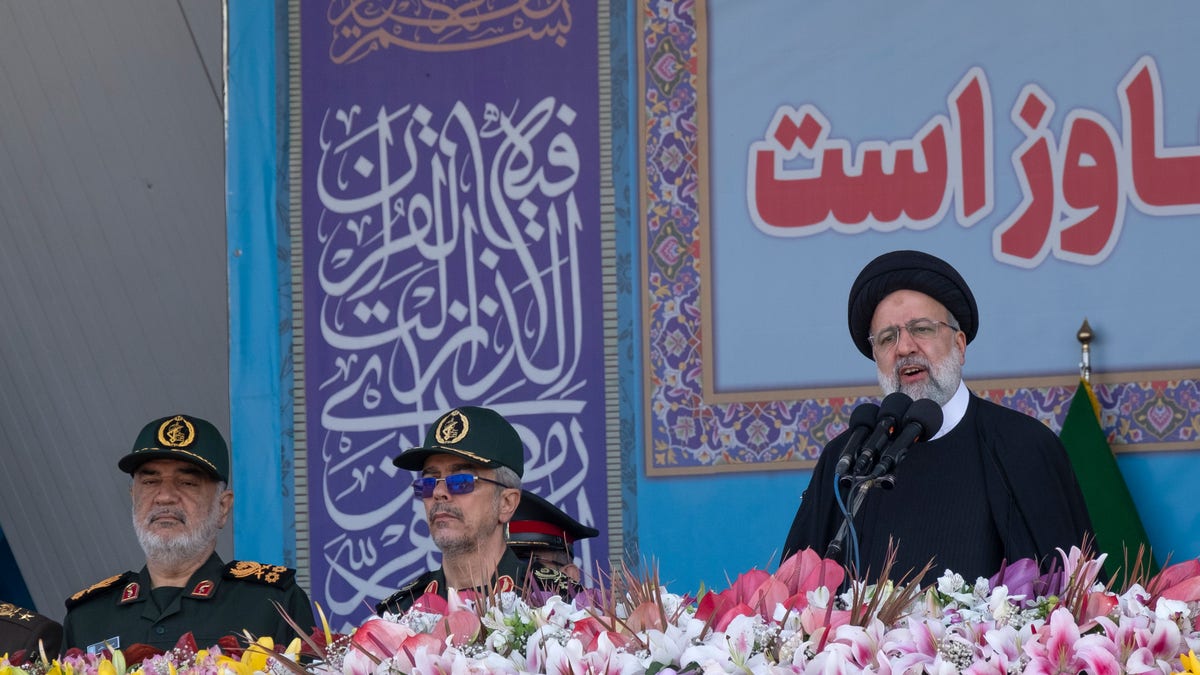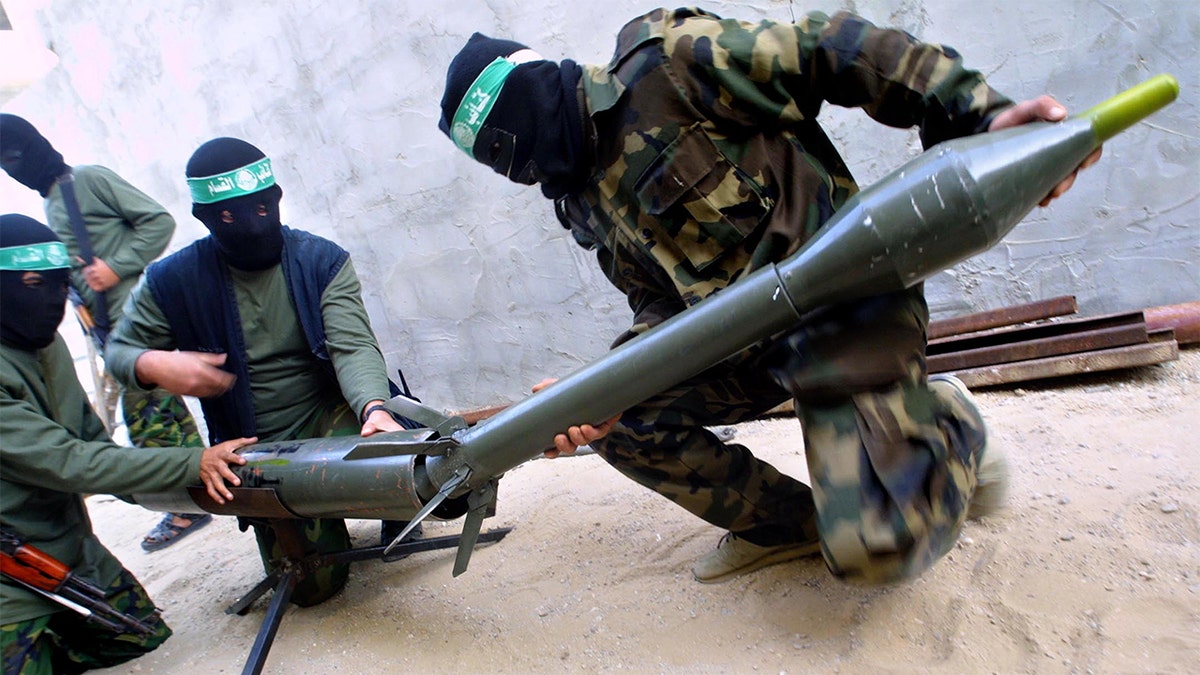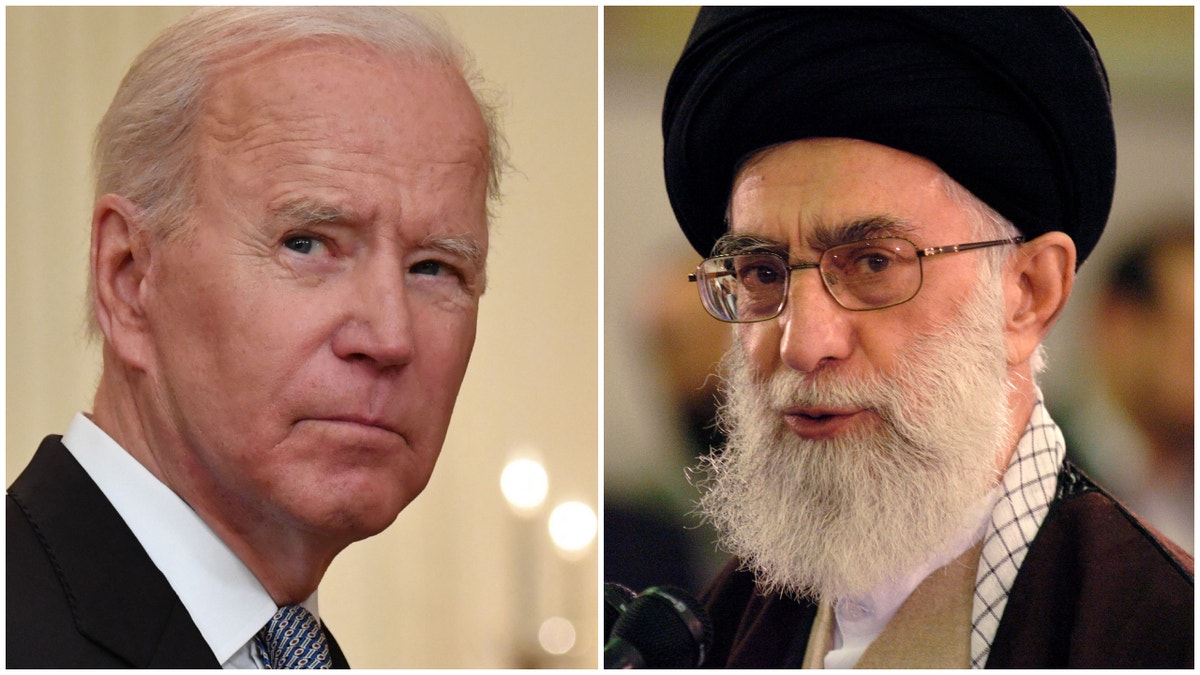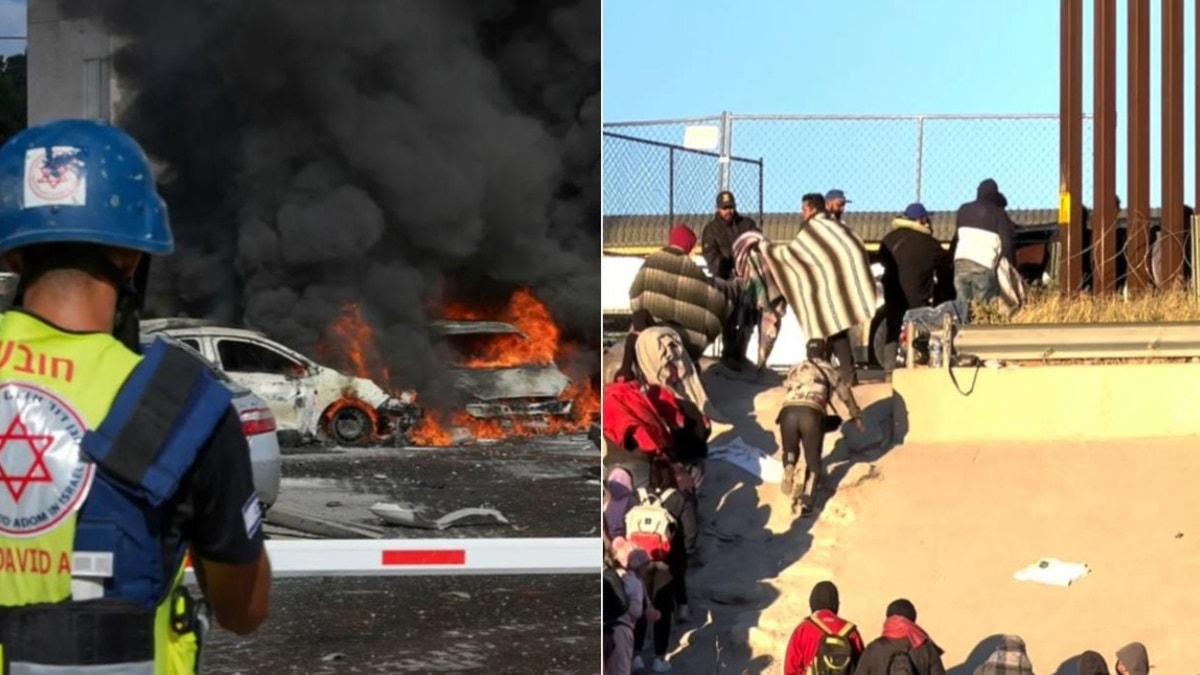Putin is pleased that attacks on Israel have taken attention off Ukraine: Rebekah Koffler
Rebekah Koffler, author of 'Putin's Playbook,' shares insight into Russia's position on the war in Israel.
As the Israeli military entered "the second stage of the war," having expanded its ground operation in northern Gaza on Monday, aiming to eliminate the Hamas terrorist threat once and for all, fears are growing over the conflict escalating into a broader war in the Middle East.
The Pentagon has beefed up U.S. force posture in the region and launched retaliatory airstrikes on two Iran-linked weapons and ammunition storage facilities in Syria, in an effort to deter Teheran from ratcheting up hostilities and expanding the conflict. Sending two carrier strike groups to the Eastern Mediterranean Sea, authorizing the deployment a terminal high-altitude area defense (THAAD) battery and additional Patriot battalions to the region, as the Pentagon has done, is a good strategic messaging campaign. But it does nothing to counter the threat posed by Iran and its proxies here in America.
The Biden administration is likely preparing for a wrong kind of war and must shift its strategy. Rather than focusing exclusively on preventing a multi-front war in the Middle East, President Biden must first and foremost keep the Iranian threat away from the U.S. homeland.
Iran is unlikely to engage in a head-to-head kinetic confrontation with the United States. First, Iran is not suicidal to take on the overwhelmingly superior U.S. military. And second, direct state-on-state combat is not Iran’s way of war. Asymmetric warfare, or fighting in what the U.S. military calls the "gray zone," is the Iranian forces’ signature style, which they have employed since the creation of the Islamic Republic in 1979.
IRAN PROXIES STEP UP ATTACKS AGAINST AMERICAN FORCES OVERSEAS IN LIGHT OF US SUPPORT FOR ISRAEL

Iranian President Ebrahim Raisi, right, speaks during a military parade in Tehran, April 18, 2023. Raisi said, we will destroy Haifa and Tel Aviv if Israel takes ''the slightest action'' against Iran. (Morteza Nikoubazl/NurPhoto via Getty Images)
Gray zone is neither peace nor war. It is an in-between phase on the conflict spectrum when tensions between opposing sides rise, escalating into a crisis, but no declaration of war is proclaimed.
Military strategists discovered that a weaker power is able to get its stronger opponent "stuck" in a low-intensity, often protracted, indirect military confrontation, wearing him down and often struggling to respond. The belligerents employ low-tech weapons such as homemade explosive devices, proxy actors, non-military means such as cyberattacks, targeted killings and kidnappings.
U.S. leaders have found it very difficult to counter this form of warfare, as there is no clearly defined battlefield and no regular combatant force to fight against. No internationally recognized – albeit largely by Western militaries only – rules of armed conflict apply.
Consistent with this asymmetric warfare doctrine, Iran has built an informal network of more than a dozen militant partners and proxies across the Middle East, including in Iraq, Syria, Lebanon, Yemen, Bahrain and the Palestinian territories. These proxies are backed by Iran’s Islamic Revolutionary Guard (IRGC) and the elite Qods Force, which supplies them with sophisticated weapons such as UAVs, funding, and training.
Dubbed the "Axis of Resistance," these groups are doing the fighting, using terrorist means, on behalf of Iran to achieve Tehran’s strategic objective, which is to drive out the U.S. military from the region. Their main target is our forces, military bases, embassies and other facilities. Since the beginning of the Israel-Hamas conflict alone, U.S. forces in the Middle East have been attacked with drones or rockets at least 25 times.
BIDEN ADMIN TO MEET WITH SAUDI DEFENSE MINISTER THIS WEEK IN BID TO EASE TENSIONS: REPORT

Members of the Iranian Revolutionary Guard march during a parade to commemorate the anniversary of the Iran-Iraq war. (Reuters)
The threat from Iran – which was designated by the U.S. government as a state sponsor of terrorism in 1984 – has reached our country, as acknowledged Tuesday by FBI Director Christopher Wray during in a congressional hearing. Wray stated that "the ongoing war in the Middle East has raised the threat of attacks against Americans in the United States to a whole other level."
He warned that the attacks by Hamas on Israel will likely inspire terrorist attacks in the U.S. homeland. Wray also admitted that Iranians "have directly or by hiring criminals, have mounted assassination attempts against dissidents and high-ranking current and former U.S. government officials, including right here, on American soil."
Iran has been developing "surrogate networks inside the United States" for more than a decade in order to conduct proxy attacks on U.S. citizens, according to the 2023 Annual Threat Assessment issued in March by the Office of the Director of National Intelligence.
Last Friday, the intelligence unit of the U.S. Customs and Border Protection (CBP) San Diego Field Office issued a warning in a memo to its staff that individuals "inspired by, or reacting to, the current Israel-Hamas conflict may attempt travel to or from the area of hostilities in the Middle East via circuitous transit across the Southwest border."
The memo specifically mentions Hamas, Palestinian Islamic Jihad, the Popular Front for the Liberation of Palestine and Hezbollah, all of whom are backed by Iran, a decades-long sponsor of terrorism, as acknowledged by the U.S. Department of State.

Hamas terrorists prepare a homemade rocket. (Getty Images)
According to CBP statistics released on Saturday, a record number (169) of people encountered by Border Patrol agents at the southern border are on the terror watch list in FY 23 – surpassing the numbers encountered in the last six fiscal years combined.
The possible indicators, as noted in the CBP memo, are military-age males, the possession of military gear, single travelers, an undetermined return plan and an association with the region. The number of individuals posing a national security threat to the U.S. – who attempted to cross the southern border illegally over the last two years – is in the thousands.
The homeland security organizations even have a term for this group – "special interest aliens." And they are known to the government, as they are already listed in the special database called the Terrorist Screening Dataset. Imagine how many of such individuals may have entered our country, unbeknownst to our federal agencies.

President Biden and Supreme Leader Ali Khamenei (Probst/ullstein bild via Getty Images | Nicholas Kamm/AFP via Getty Images)
Another recent report warned about Iran’s plans to attack strategic security assets and institutions inside the United States. The report, titled "The Unseen Threat of the Mapping Project," claims that Iranian elements have identified 298 American strategic security assets and institutions as well as personnel for attacks, kidnappings and assassinations.
The report asserts that Iran likely has developed a "kill list" targeting law enforcement officials. As recently as March, the commander of Iran’s Islamic Revolutionary Guard Corps Aerospace Amirali Hajizadeh, in a televised interview, urged the murders of the former commander of the U.S. Central Command, Gen. Kenneth McKenzie, former President Donald Trump, and former Secretary State of Mike Pompeo.
Iran’s regime and its proxies already have attempted assassinations on our soil, including that of a U.S. citizen. In 2021, three men with ties to Iran, and to an Eastern European criminal organization, executed a plot to murder U.S. journalist Masih Alinejad in New York. Fortunately, they were apprehended by the FBI. In 2011, Iranian agents plotted to kill the Saudi Arabia ambassador to the United States, Adel al-Jubeir, in a Washington, D.C., restaurant.
CLICK HERE FOR MORE FOX NEWS OPINION

Hamas attack on Israel, left, and the southern U.S. border. (Getty Images)
The seriousness and credibility of the Iranian threat on the homeland is demonstrated by the fact that the U.S. government pays $2 million per month for the round-the-clock security provided to Pompeo and former President Trump’s special envoy to Iran, Brian Hook. Both of these gentlemen are on Iran’s target list for assassination.
Moreover, last November, Homeland Security Secretary Alejandro Mayorkas testified to the Senate that the Islamic Republic could attack the United States "with little to no warning." And FBI Director Christopher Wray testified that Iran posed an "escalating threat to the homeland, having become more capable and more aggressive in their harmful and criminal activity."
Yet, the Biden administration has not taken any serious steps to halt the flow of foreign agents by closing the southern border. Nor has the administration addressed the growing spread of antisemitism across U.S. college campuses, a sentiment that will likely spark violence as Israel expands its military efforts to eradicate the existential threat of Hamas and Islamic extremism.
CLICK HERE TO GET THE FOX NEWS APP
We have already seen the level of mayhem, pillaging, arson and vandalism inflicted on American cities by the agitated mob during the riots associated with George Floyd’s death in 2020. Imagine if a malevolent foreign power, obsessed with America’s destruction, that has been flowing operatives into our land for a decade, starts agitating these rioters and murdering Americans. Not only would this destabilize the normal functioning of our society, but it would also constrain the freedom of action that the U.S. government needs to prevent a broader war in the Middle East.
The commander in chief must focus on America’s defense and let Israel eliminate threats to its security, which it is perfectly capable of doing.


